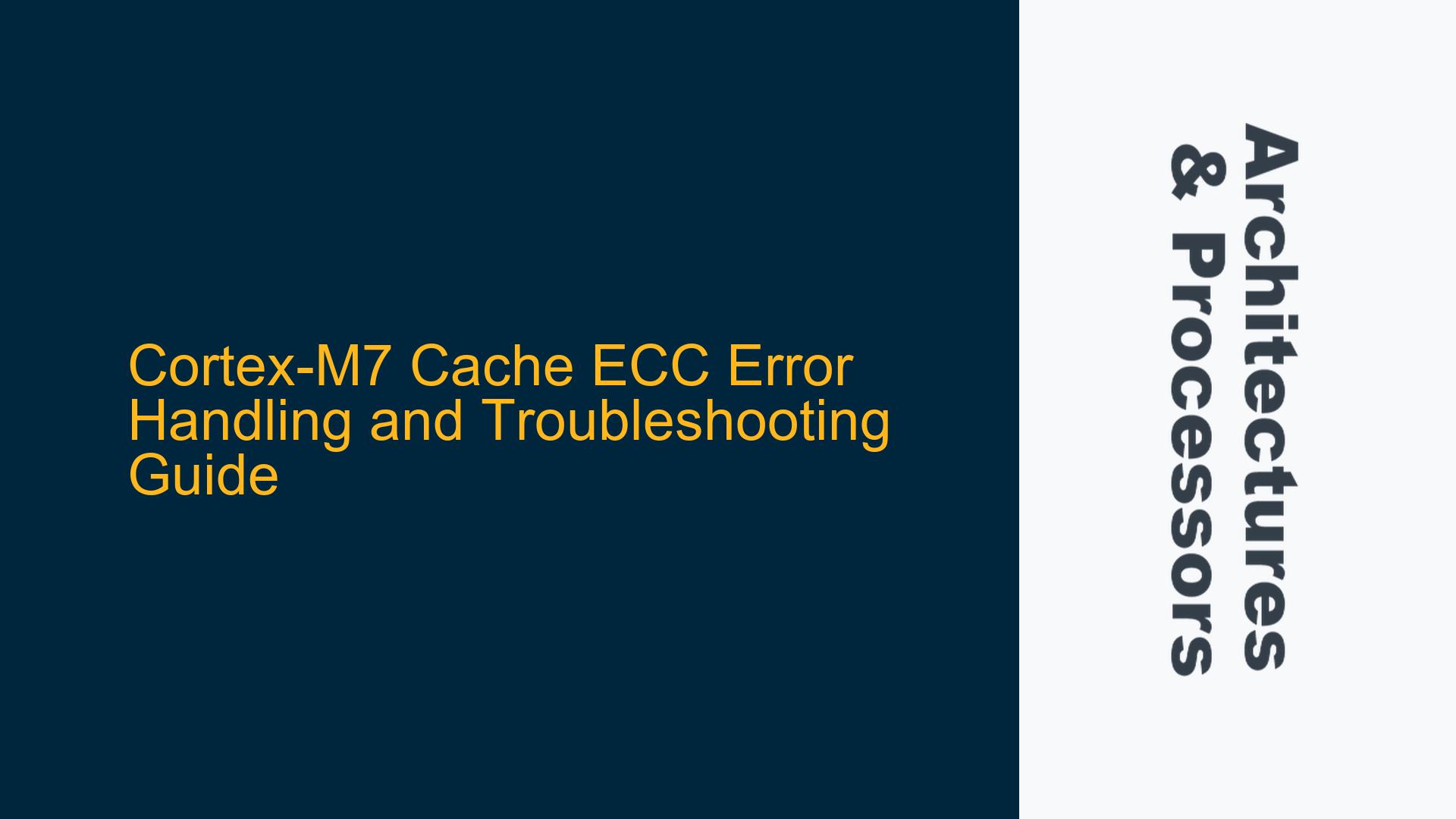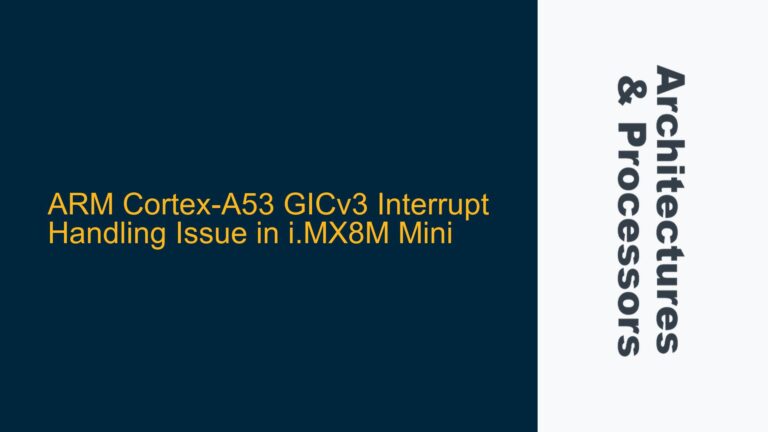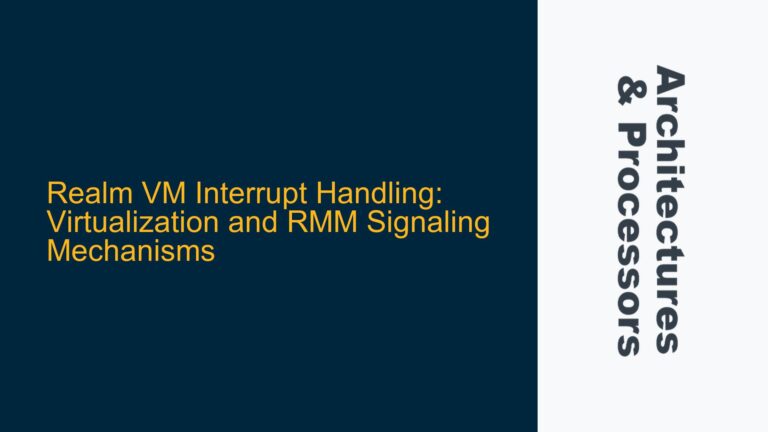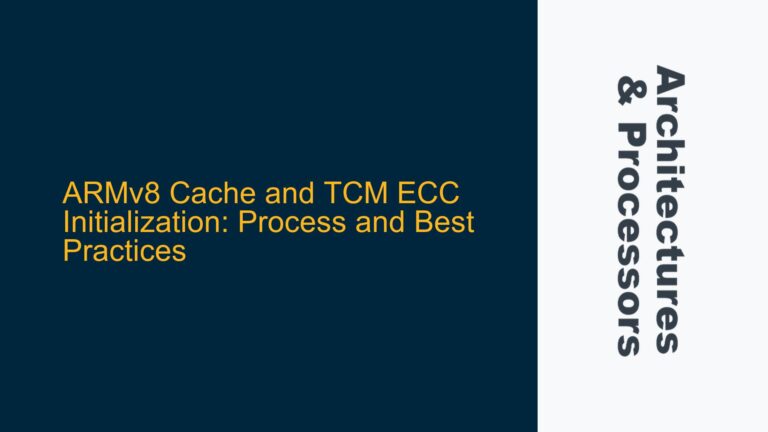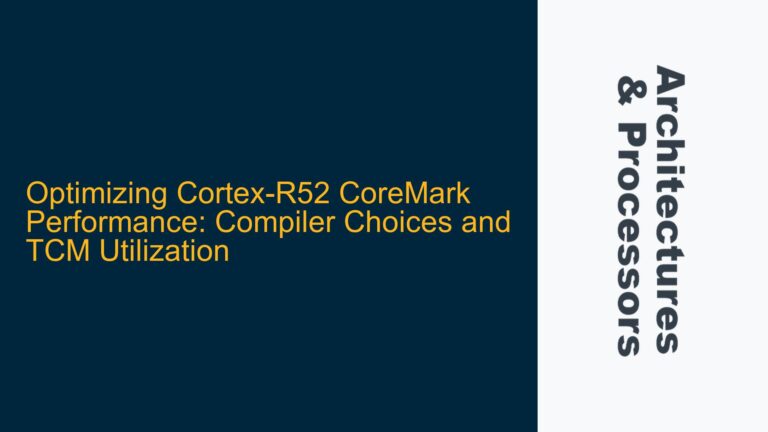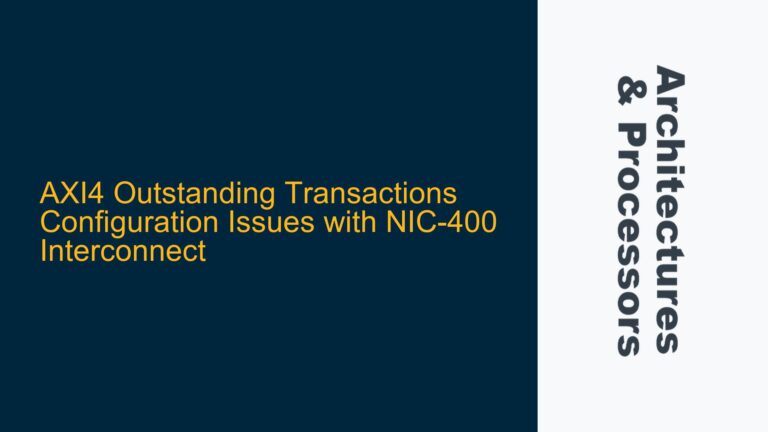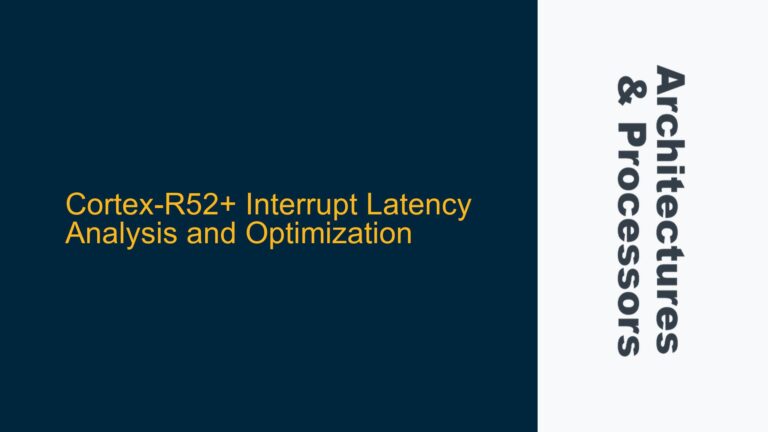Cortex-M7 Cache ECC Error Reporting and Behavior
The Cortex-M7 processor, as implemented in devices like the STM32H7, incorporates Error Correction Code (ECC) mechanisms for both the instruction and data caches. ECC is a critical feature for ensuring data integrity, particularly in safety-critical or high-reliability applications. However, the behavior and reporting of ECC errors in the Cortex-M7 cache subsystem are not always straightforward, leading to potential confusion during debugging and system integration.
The Cortex-M7 reference manual provides a high-level overview of ECC functionality, stating that ECC is optional and that errors detected during cache lookups are corrected if possible. However, the manual does not delve into the specifics of how ECC errors are reported to the core or how the system should handle uncorrectable errors. This lack of detailed documentation can make it challenging to diagnose and resolve issues related to cache ECC errors.
In the case of the STM32H7, ECC is enabled by default for both the instruction and data caches. The STM32H7 documentation confirms that ECC is supported, but it does not provide explicit details on how ECC errors are reported or handled. This ambiguity necessitates a deeper exploration of the Cortex-M7 architecture and the STM32H7 implementation to understand the potential causes and solutions for ECC-related issues.
Memory Subsystem Configuration and ECC Error Propagation
One of the primary challenges in diagnosing Cortex-M7 cache ECC errors is understanding how these errors propagate through the memory subsystem and whether they are reported to the core. The Cortex-M7 architecture does not include a dedicated mechanism for exposing cache ECC errors to the core, such as setting specific bits in the Configurable Fault Status Register (CFSR). This means that ECC errors detected in the cache are handled internally by the cache controller, and the core may not be explicitly notified of these errors.
For the instruction cache, single-bit ECC errors are corrected automatically by the cache controller. If a multi-bit error is detected, the cache line is invalidated, and the instruction is re-fetched from program memory. This approach is generally sufficient for recovering from errors, assuming that the program memory is not corrupted and that self-modifying code is not used. However, this behavior also means that the core may not be aware of the error, making it difficult to detect and log ECC-related issues.
In the case of the data cache, single-bit errors are similarly corrected by the cache controller. However, multi-bit errors result in the invalidation of the cache line and a re-fetch of the data from RAM. This can lead to potential data integrity issues, particularly if the cache line contained modified data that had not yet been written back to RAM. In such cases, the re-fetched data may not match the expected state of the cache, potentially leading to incorrect program behavior.
The lack of explicit error reporting mechanisms for cache ECC errors means that developers must rely on indirect methods to detect and diagnose these issues. This can include monitoring system behavior for signs of data corruption, implementing software-based checksums or parity checks, and using external tools to analyze cache and memory performance.
Implementing Cache Management and Error Detection Strategies
Given the challenges associated with detecting and diagnosing Cortex-M7 cache ECC errors, it is essential to implement robust cache management and error detection strategies. These strategies should focus on minimizing the likelihood of ECC errors, detecting errors when they occur, and recovering from errors in a controlled manner.
One key aspect of cache management is ensuring that the cache is properly configured for the specific application. This includes enabling or disabling ECC based on the system requirements, configuring cache line sizes, and setting appropriate cache policies for write-back and write-through operations. In the case of the STM32H7, ECC is enabled by default, but developers should verify that this configuration aligns with their system’s reliability and performance requirements.
To detect ECC errors, developers can implement software-based monitoring mechanisms. This can include periodic checks of critical data structures, the use of checksums or hash functions to verify data integrity, and the implementation of watchdog timers to detect unexpected system behavior. While these methods do not provide direct detection of cache ECC errors, they can help identify symptoms of data corruption that may be caused by ECC issues.
In addition to software-based monitoring, developers can use hardware tools to analyze cache and memory performance. This can include using debug probes to monitor cache hits and misses, analyzing bus traffic for signs of unexpected behavior, and using performance counters to track cache-related events. These tools can provide valuable insights into the behavior of the cache subsystem and help identify potential issues related to ECC errors.
When an ECC error is suspected, developers should follow a systematic approach to diagnose and resolve the issue. This can include reviewing the system configuration to ensure that the cache is properly configured, analyzing system behavior for signs of data corruption, and using hardware tools to monitor cache performance. If an ECC error is confirmed, developers should consider implementing additional error detection and correction mechanisms, such as redundant data storage or error-correcting memory, to improve system reliability.
In conclusion, while the Cortex-M7 cache ECC error handling mechanisms are robust, the lack of explicit error reporting can make it challenging to diagnose and resolve issues related to cache ECC errors. By implementing comprehensive cache management and error detection strategies, developers can minimize the impact of ECC errors and ensure the reliable operation of their embedded systems.
